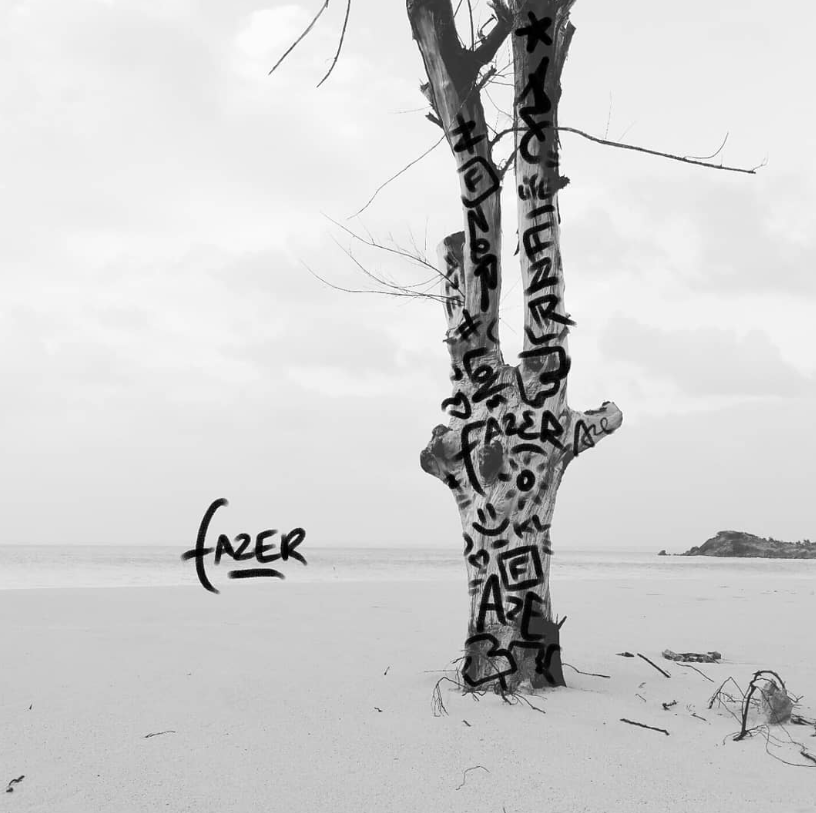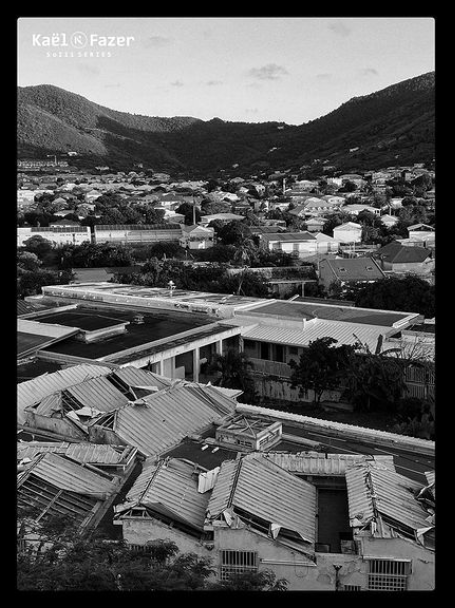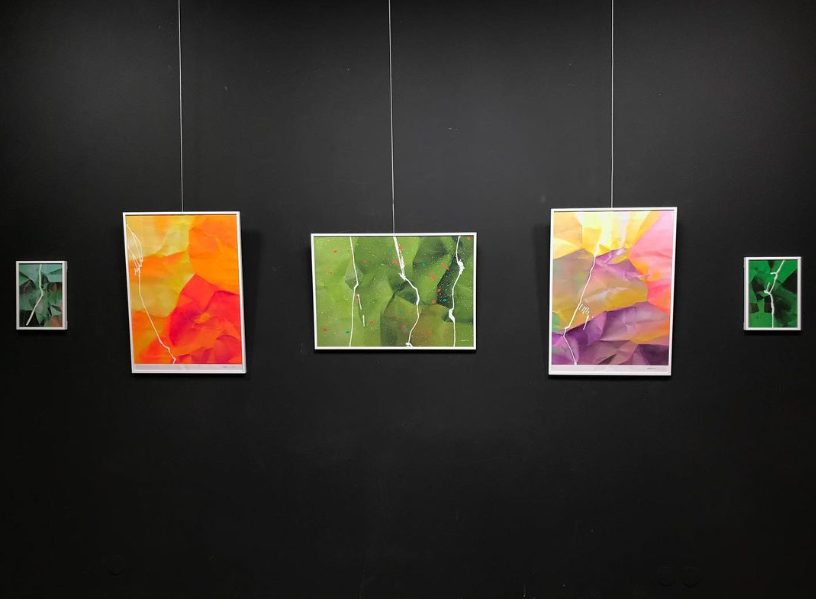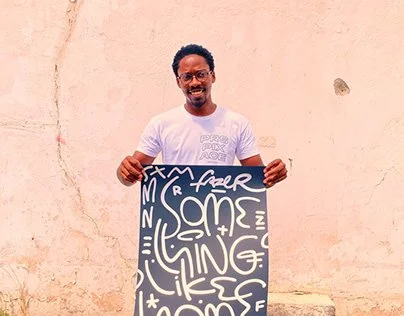
Land_Marks
An interview with artist Kaël Fazer.

“I’m living on a Caribbean Island, and I’m surrounded by people of different nationalities and different backgrounds.”
In this conversation with French artist Kaël Fazer we addressed questions of identity, place, and the artistic exploration of landmarks in St. Martin through photography and sculpture. As a witness to the inter-Caribbean migrations of people to St. Martin – mainly from Martinique and Guadeloupe – as to the tourist’s economic and physical impact on the island, Fazer ventures on a reflection of himself as a creolophone St. Martiner. Throughout his work, Fazer plays with the notion of a landmark as a place of reference and permanence by inserting a series of colorful abstract objects outdoors in places keen to daily activities or childhood memories. “Landmarks” are Fazer’s personal interjection to the tropical landscape of St. Martin through color, textures, and form. In the same vein, his black and white photographs, removed from any color, contrast the promotional touristic image of St. Martin to accentuate the juxtaposition and ambivalence of local and foreign identities.
Before we start our conversation. May I ask for a formal introduction?
Kaël Fazer: My name is Kaël Fazer, I’m French. I was born in Martinique in 1989, and my parents are from Martinique and Guadeloupe. I was raised in St. Martin, the French side of St. Martin.
IR: It’s interesting. Your parents come from other French Caribbean islands; I wonder how did they arrive to St. Martin?
KF: My father was a plumber, and he came at that time when they were building a lot of things in St. Martin. We had a lot of Guadeloupeans to come to St. Martin for work. And my mom already had four children from a first wedding (marriage) and that’s how they met. She was mistreated. (Elle étais une femme batue.)
IR: Growing up your whole life in St. Martin, how and when did you start your artistic journey?
KF: It all started with drawings, I believe it was my brothers who introduced me to art, to drawing. I remember, I used to handcraft some paper pouches, paper bags to draw Pokémons on it. I went to the supermarket in the hood and tried to sell it to them. [No luck.]
IR: From that, did you later enroll in an academy of art or are you a self-taught artist?
KF: A little bit of both. I used to draw cars on the computer. They suggested me to do a designer school, to learn card design. So, in a way to tried. I went to France, to an art school I had a to do a mise-in, but it went bad, everything was different. I had bad grades for the last two years. From there I jumped to something else, I had another project – that project was designing t-shirts and few months back I came to St. Martin and kept doing t-shirts. And then, someone from Guadeloupe came … and I said why not. And then, I went. I still have family over there (I went to Martinique to study in 2009). The first year, we are doing absolutely everything: photography, graphic design, histoire de l’art, paintings, we do everything. And then, the two other years we specialized. And I specialize in product design.
IR: On your Instagram account, based on your captions in the black and white photographs, you address questions of home. Can you tell me more about the intention behind this series?
KF: I’m living on a Caribbean Island, and I’m surrounded by people of different nationalities and different backgrounds. I feel at home in St. Martin, and a lot of people say that about St. Martin and I feel that’s okay and sometimes I don’t get to relate about the image they show of St. Martin. I try to go beyond the beautiful landscape (the water, the sky), beyond the shoreline view.
In these photos there is a landscape, but I use a portrait format, to open my horizon - in trying to open up and show more. I believe the pictures are pretty, and well-balanced (some of them), but moving past as someone from my background, how do I feel? I’m a Crelophone St.-Martiner. I came to that thought that what we call a real St. Martinin here is an English-speaking person. This is my perception; I’m trying to define myself as a St. Martinin. What kind of St. Martinin am I, since we are not all considered as St. Martinin - for subjective reasons some of the people that I consider St. Martinin like maybe more than myself are not seen as St. Martinin. This is nothing exclusive to St. Martinin, the question is the same in Martinique and Guadeloupe. My purpose is to define myself out of all of that, my purpose is not define what a St. Martinin is, but to define me. My name Fazer is a slave name, the first lady who had that name was a slave. In a way I can tell that my ancestors have been on these islands as much as the Caucasian people, for example. So, I’m not more Caribbean than they are. These are the different perspectives that give the opportunity of finding myself.
IR: Brings me to the casualties that we experience in the Caribbean and that becomes part of who are.
KF: My sisters and brothers were born in this hospital. It’s gone and the building is as it is in the picture. In my neighborhood and all the island, that is where I took this picture. You the sky is occupying most of the picture but that with the hospital I inverted the attention. the land is occupying most of the picture we have a lot of buildings in that state like the hospital is in this picture…Some kind of a progressive effect from the first building to the ones in the back. The ones at the back of the picture are new buildings from years ago. So, what I wanted to say was that we have a lot of buildings in the same state as the hospital is in that picture. For example, we had a movie theater in my neighborhood which is no longer in service, but the building is still here. In a way, natural disasters affect us but is a way of feeling at home. It is about our environment, about landmarks. When I was younger, I have memories of this building, with that neighborhood, with that island, and it’s like everything is being destroyed. So, in a way I no longer have these (places) to remind me of my school days, for example, as everything is changing. The land is changing, the buildings are changing, and people are changing.
And so, I’m asking myself how it affects me because I believe it does.
IR: I can see it does. In this picture, you can see it, and it is something that I can relate to other Caribbean islands (mainly Puerto Rico), in seeing the contrasts of value in some of these places from a tourist’s and a local’s perspective, a path that is filled with memories. Which brings the question of place and of the self amid these changes. This photograph creates a nice contrast between the pictures where the sky is at the forefront, and you have scenic, pretty picture to then interrupt that glossed image with reality. It brings me in, as a viewer, wanting to know more about this place and its people – so create depth and curiosity in the viewer. Which expands in your other photograph of a man and an airplane.
KF: What is happening is we went fishing on the beach is Mullet Bay, people don’t fish. We fish because we are locals and we’re used to fishing. Fishing is a local activity. Just like you I find interesting the presence of this guy who was with us. He was fishing with us on that beach. That beach is not a very touristic beach, and the plane in the back to me can refer to the touristic aspect of St. Martin. I remember during COVID, on curfew we would go fishing every day since it is not a known beach where people go. The same beach we went when I was younger, these landscapes are not changing… yet. It’s maybe one of the reasons why I present them as portraits as if I’m trying to present it not necessarily as a landmark but as somebody I knew (an acquaintance).

“The land is changing, the buildings are changing, and people are changing.”

‘Zebra à la recontre de l’autre’
Through this visual re-acquaintance with time and place, can you tell me about your sculptures?
KF: I’m working in a car workshop where there are these car stickers. I started compilating and experimenting with all the garbage that is too small and shaped them. The first one I did was in 2009 and then went back in 2016 or 2017, I consider them as landmarks. They do a union between time and space. I used to placed them in different locations, places of great importance to me. The last ones I did are more colorful. I use color to get closer to the public, to the viewers because to me color is a universal language. To talk with my viewers, I need to emphasize my work with colors, it will bring the viewers to ask questions, to not be afraid to ask because we’re open to colors. I want the work to relate to the present, to a meeting point with others (audiences) through the use of different tones in between.
The name of this one is ‘Zebra à la recontre de l’autre’ (Zebra, encountering the other). The question why zebra maybe. In psychology, I read something about some people, especially artists, that were considered as zebras, the way that they are, the way they work all different aspects of their personality fit that definition.
I see how your exploration and experimentation with various mediums and textures provide you with a language to insert yourself in the landscape and, perhaps, the heritage of St. Martin. What do you hope your art will lead to next?
KF: I love to research; I’d like to do a residency so I can focus on the work and explore new things. For my works to be seen, to talk about it. My purpose is not to do nice things or beautiful things, I like my works to have something of value. I believe it does.
Kaël Fazer
All images can be found on the artist’s Instagram account @kael_fazer













